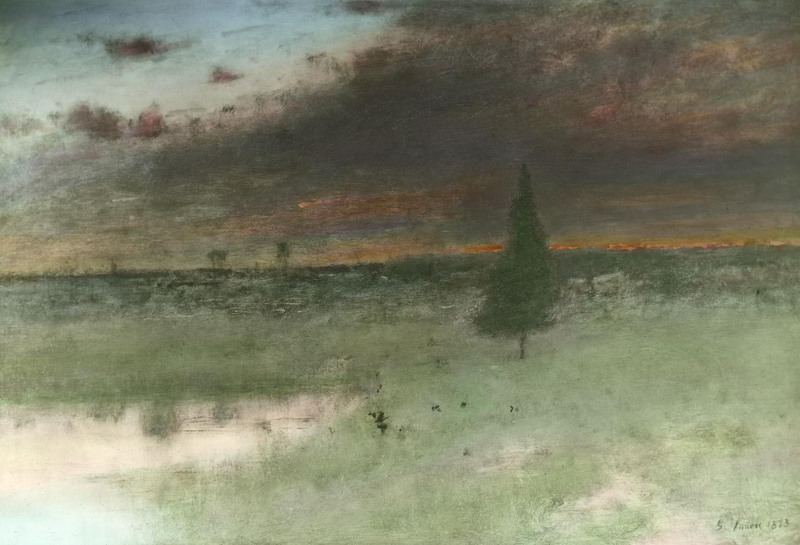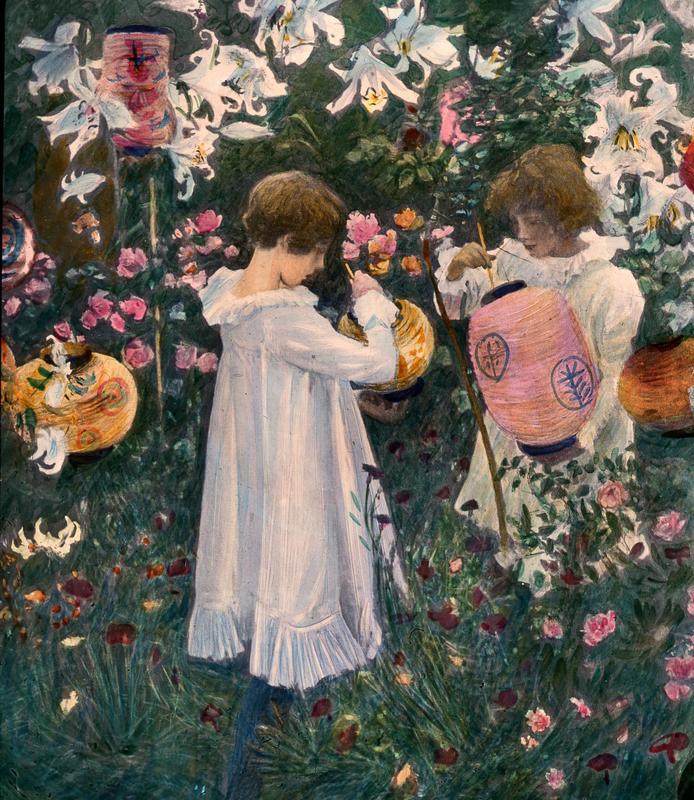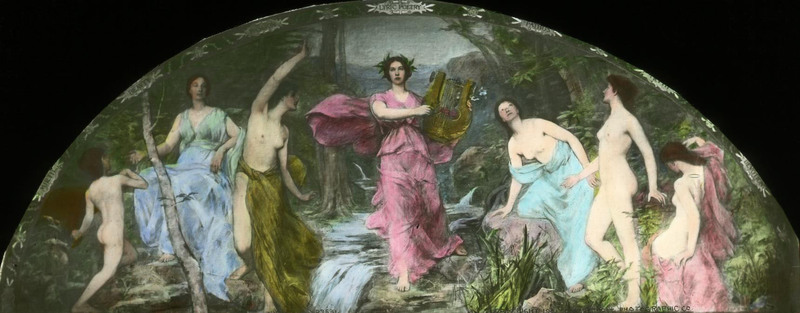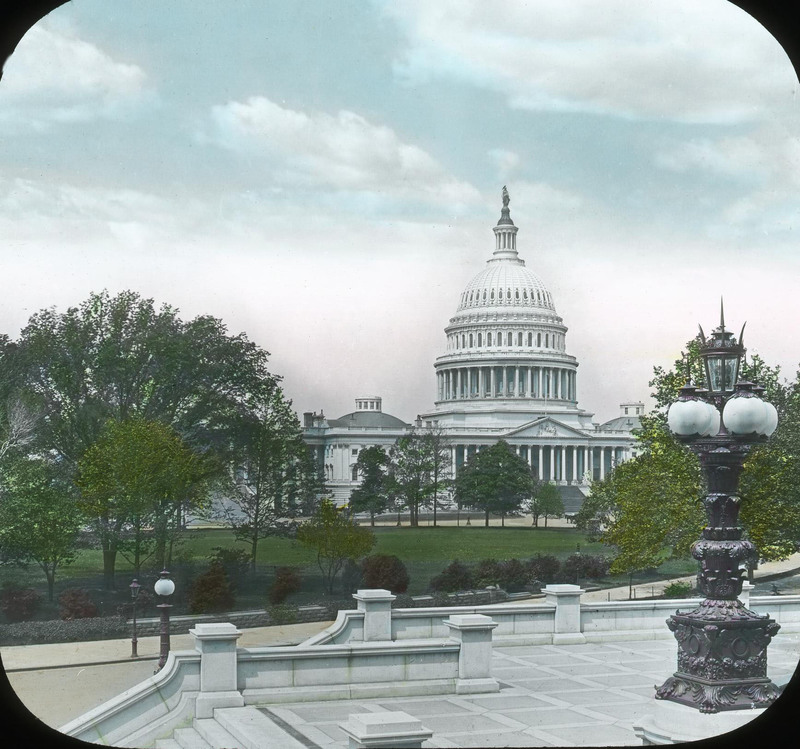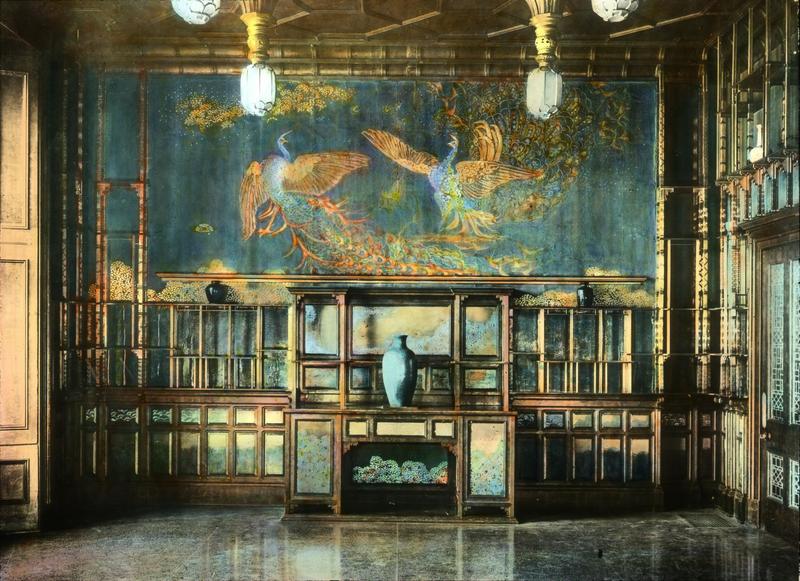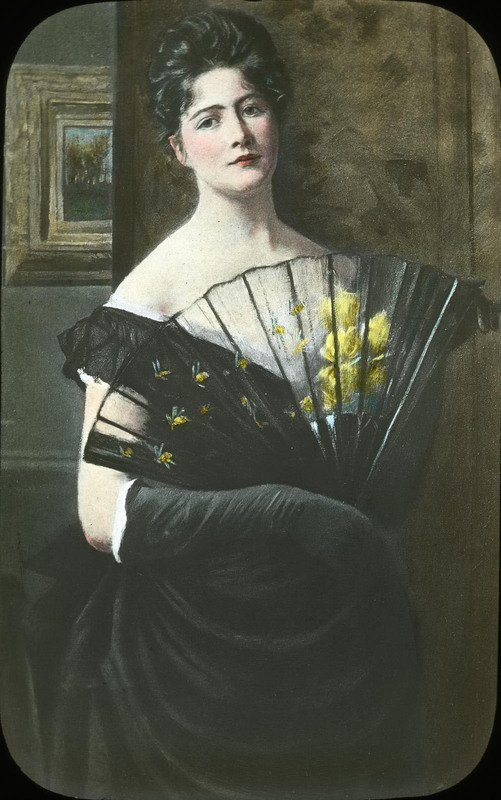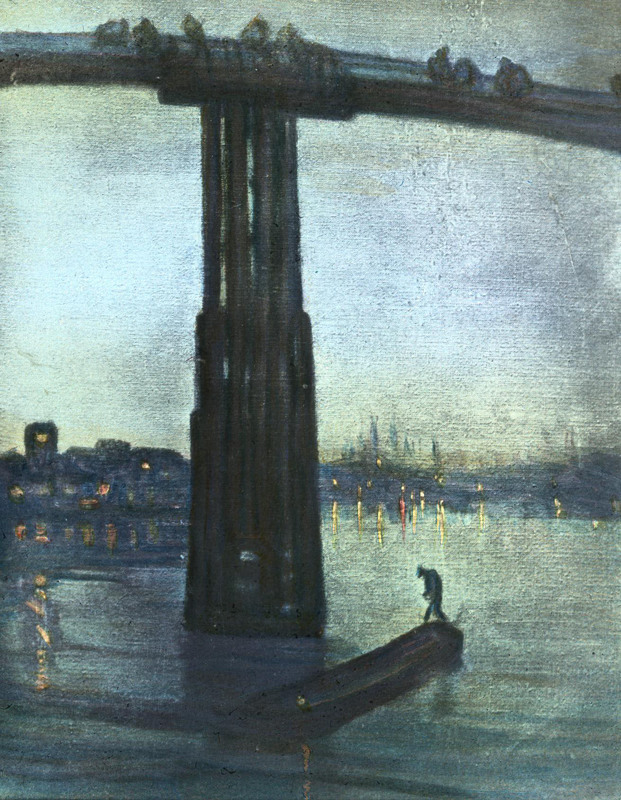Art in America
McKnight's lectures on American art and architecture served multiple purposes. Firstly, they were part of her mission to disprove the notion that the United States did not produce great works of art. Indeed, McKnight even felt that starting with the study of American artists could be a gateway to the more traditional study of European masters. In 1906 she wrote, "Study your Sargents and Whistlers, your Inness and Abbey, your Wyant and Martin and inevitably you hark back to the old and older masters across the water who are consciously or unconsciously the inspiration of these men."
Mcknight's collection of slides contained many examples of these artists, especially Whistler, including colored reproductions of Nocturne Blue and Gold, Symphony in White #2, and examples of his work in the Peacock Room. Many of the reproductions included in McKnight's American art slides came from the paintings in the collection of Charles L. Freer, a Detroit art collector who presented his works to the Smithsonian Institution. Additionally, her lectures focused on municipal art such as murals and architecture. McKnight emphasized how American cities could be improved and included views of Washington and the new plans for beautifying D.C. in her talks. She saw these as signs of America's bright future as a leader in the arts.
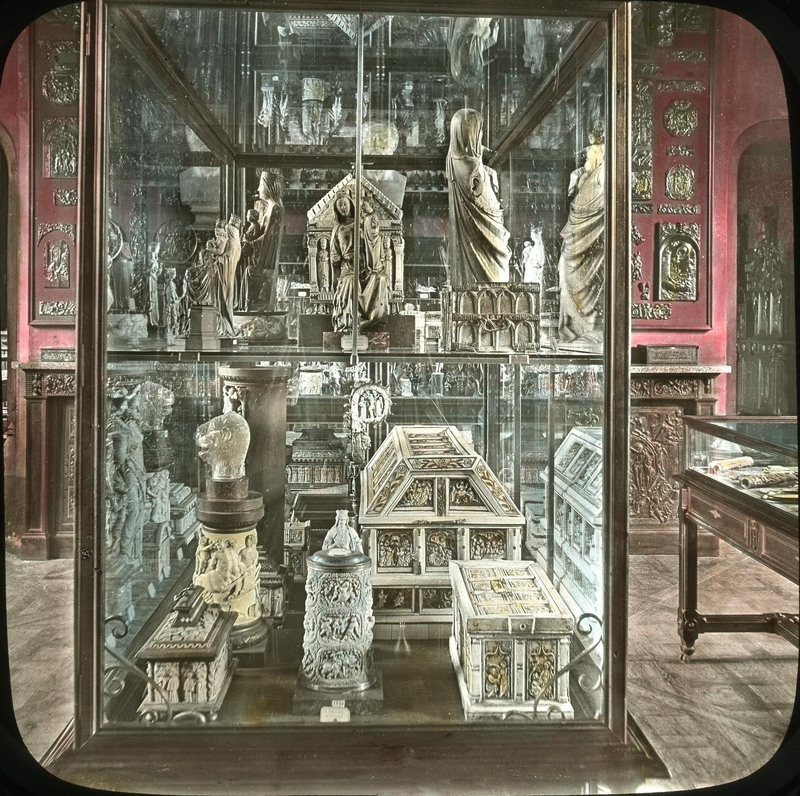
Walks Through Paris
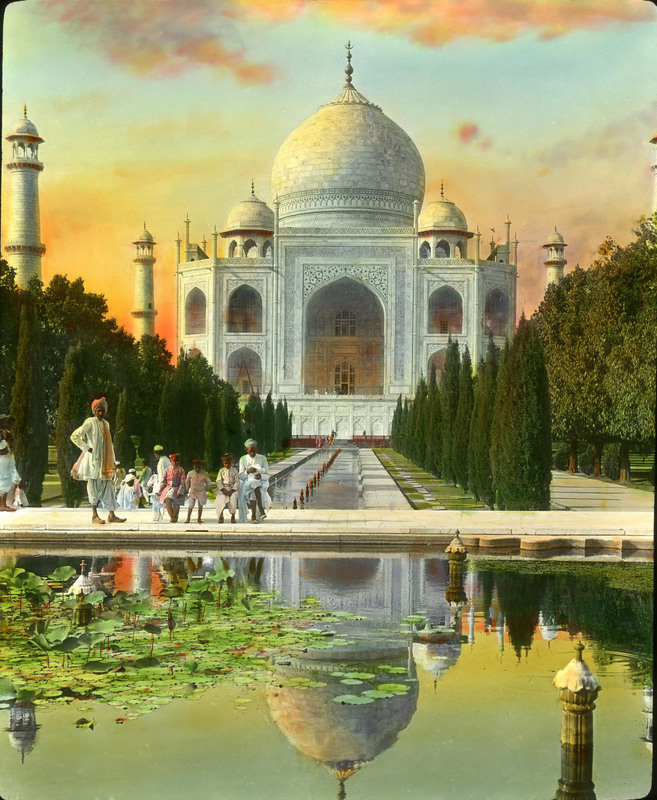
Mother India in Pictures

